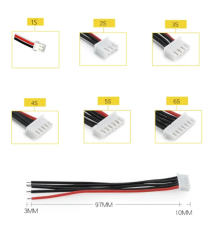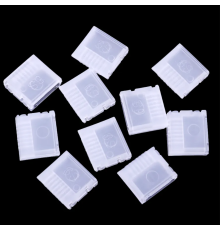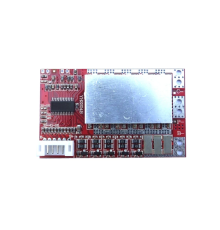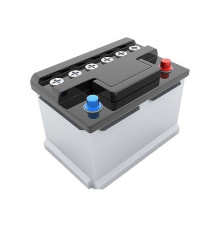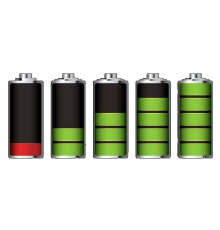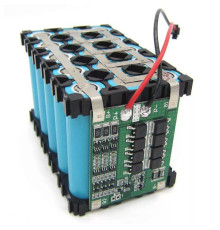Battery structure
A modern battery is a series-parallel connection of elements according to a certain scheme. For example, a lithium battery Li-Ion 12V 21Ah (3s7p) consists of 21 lithium cells assembled according to the 3s7p scheme.
The 3s7p circuit consists of 3 banks (rulers, cells) with 7 elements connected in series in each (to increase the charge capacity). And the more "parallels" in the bank, the higher the battery capacity. And the more "cans", the higher the battery voltage.
Here it should be noted that the capacity of each element in the assembly (accumulator) is different. Elements produced by the same manufacturer, at the same time (that is, taken from the same batch) and having the same denomination - have a close, but not the same capacity.
This fact is very critical for the battery, and therefore should be taken into account when assembling. That is, all elements must be sorted in such a way that the total capacity of each jar is almost the same. The key word here is almost. The fact is that no matter how hard we try to select and sort the elements, they will still remain different, they will work differently and change their characteristics over time in different ways.
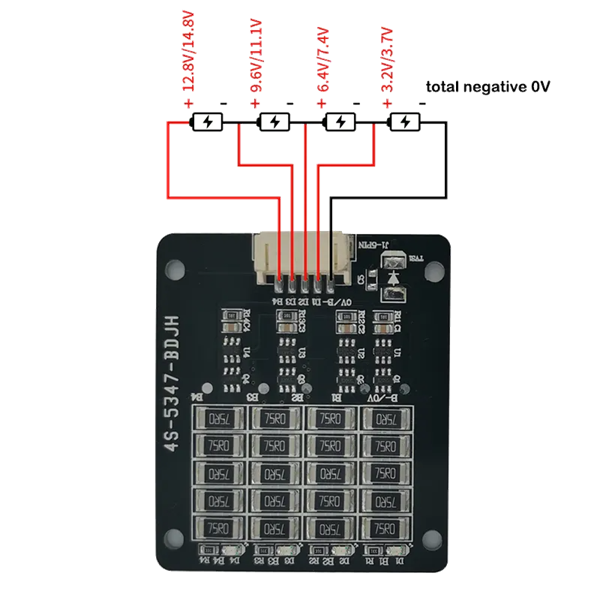
Imbalance in the capacity of jars
What does this mean for the battery? Imagine that we have an accumulator with unbalanced banks. We're trying to recharge it. A jar with a larger capacity will charge faster. The BMS board will see this and stop the charge so as not to overcharge the bank. But the rest of the banks will remain undercharged, and the battery will not reach its full capacity.
A similar problem occurs when this battery is discharged. When the battery is discharged, the bank with the lowest charge will be discharged first. The BMS board will see this and disable the battery to prevent deep discharge. But at the same time, the rest of the banks will have an unused charge.
Let's conclude: an unbalanced battery can neither take a full charge, nor use it up.
How to deal with these? This is where a charge balancer comes to the rescue. Charge balancing device (balancer) - serves to equalize the charge of cans (series-connected elements). Equalization of the charge inside the jar (parallel connected elements) occurs automatically.
Types of balancing devices (circuits, boards, equalizers)
According to the principle of operation, charge balancing devices are divided into types:
- Passive balancing devices;
- Active balancing devices.
Passive balancing devices
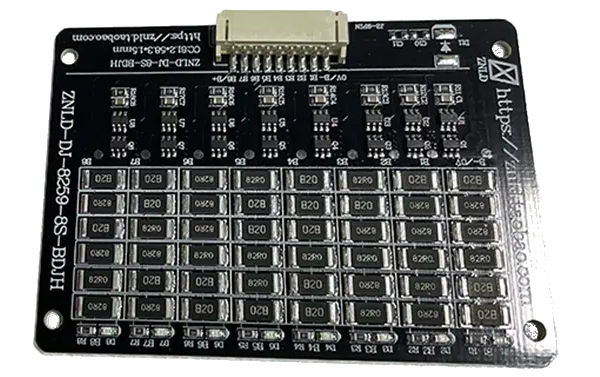
Passive balancing devices can be part of BMS boards, or they can be made as separate devices.
The work of a passive balancer comes down to controlling the charge on the bank. As soon as the charge of the bank reaches its maximum value, and the remaining banks are still in the process of charging, the BMS controller activates the passive balancing circuit and tries to "bleed" the excess charge, to the average level of the remaining banks. The balancing circuit, at the same time, is a load resistor, which turns the excess charge into heat. It should be noted here that this approach is not very effective, but it has the right to life.
Among the shortcomings of this halfway, it is worth noting:
- The charge equalization is very slow and low current (30mA - 50mA);
- Charge equalization occurs at the final stage of charging;
- As a result of equalization, heat is released, which leads to additional heating of the battery;
- The balancing process results in additional power consumption;
- It takes longer to charge the battery in general.
Active balancing devices
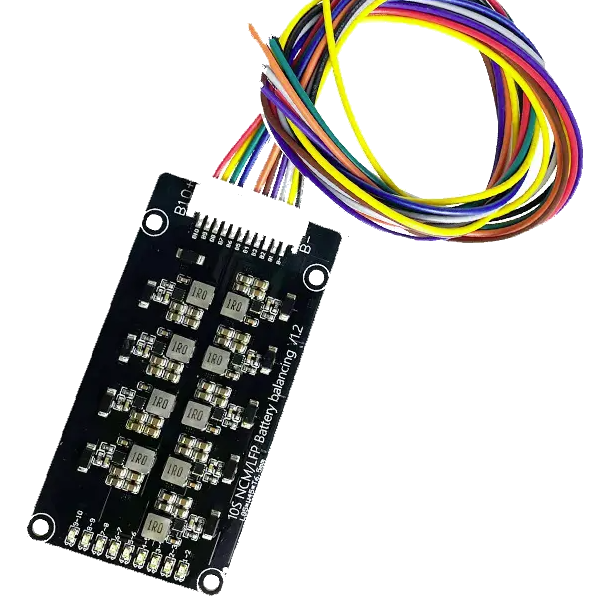
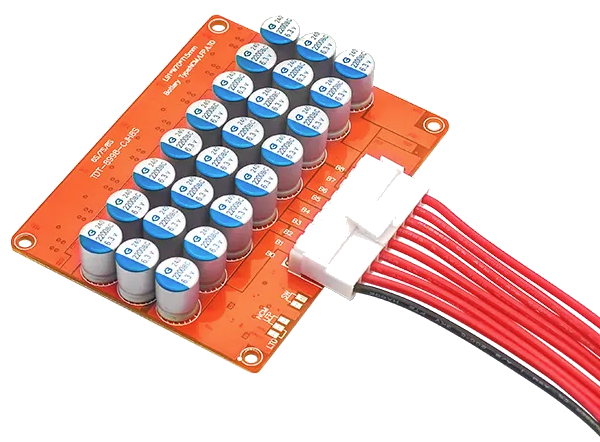
Active balancing devices are usually:
- Active balancing devices for batteries up to 30 Ah (capacitive type);
- Active balancing devices for batteries over 30 Ah (condenser type);
The work of the active balancer also comes down to controlling the charge on the bank. But the principle of equalization is somewhat different from the principle of passive balancing. The active balancer works on the principle of adjacent equalization. The balancing controller starts the circuit as soon as there is a difference in the charge of the cans, both in the process of charging and in the process of discharging the battery.
Of the advantages of this method, it is worth noting:
- Charge equalization is faster and with more current (1A - 3A);
- Charge equalization occurs immediately when an imbalance occurs;
- As a result of equalization, there is no heat emission, which does not lead to additional heating of the battery;
- The balancing process does not lead to additional energy consumption;
- It takes less time to charge the battery in general.
Summary
And finally, I would like to note: active and passive charge balancers can and are used simultaneously, while perfectly complementing each other.
1 reviews / Write a review
Related Products
Active balancer 3S 1.2A Li-Ion, LiFePo4
3S Active balancer (equalizer) 1.2A inductive type for batteries Li-Ion, LiFePo4.
The inductance adjacent equalization module is suitable for battery packs with a capacity of 30AH or less. Ple..
350.00 грн
RuiLing Balancing Wires 10mm 2S with Clamps
RuiLing Balancing Wires 10mm 2S with Clamps
Description:
The clamp for the balancing connector helps reduce the risk of damaging the balance wires during charging and provides a much larger and ..
127.23 грн
Balance Wire Clamps RuiLing
Clamps for RuiLing balancing cables
Description:
The clamp for the balancing connector helps reduce the risk of damaging the balancing cables during charging and provides a much larger and safer..
63.61 грн
Related Articles
Last Articles

26/12/2023
1464
Classification of men's classic shoes
It is impossible to imagine an elegant and confident man without a pair of good shoes. Stylish, and most importantly, correctly selected shoes will highlight your individuality and create a successful..
→

26/12/2023
2444
Classification of women's shoes
Fashionable misconceptions have been dispelled. Now you will know exactly how boots differ from shoes, and moccasins from slip-ons. Especially for you, we have prepared a shoe guide that will allow yo..
→

04/10/2023
1640
About iPhone 14
About iPhone 14 - the best choice for everyone
Introduction
Apple continues to delight its fans with innovative devices, and the iPhone 14 is no exception. This new generation smartphone will br..
→

28/09/2023
1780
About iPhone 15
About iPhone 15: the latest technology in your hands
Features of iPhone 15
iPhone 15 is the latest innovation from Apple, representing the newest technology in smartphones. It has incredible..
→

